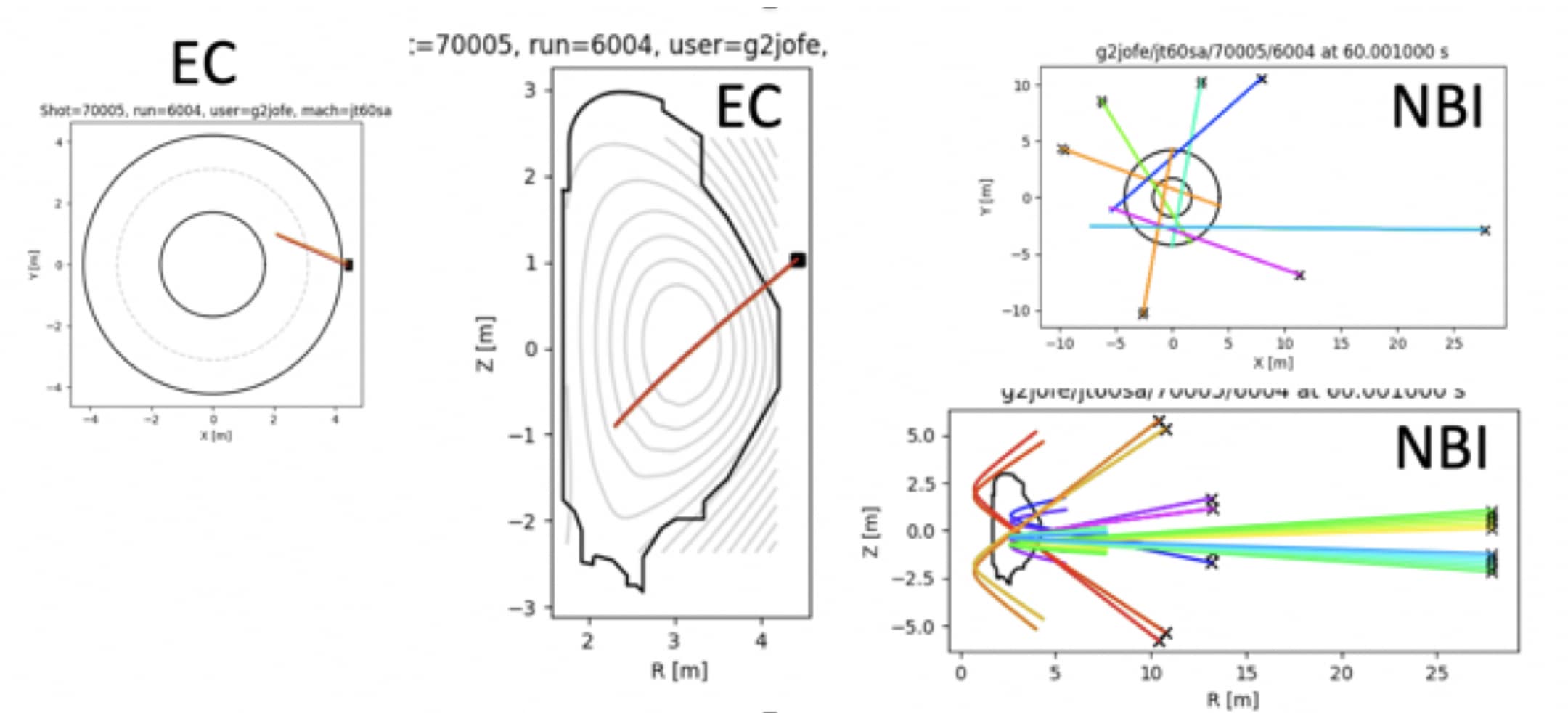Speaker
Description
Preparation of the ITER experimental campaigns will require use of verified and validated models for the prediction of plasma response to actuators and of fusion performances. Several simulation codes have been developed by the fusion community for modelling of plasma equilibrium, transport processes, MHD stability, heating and current drive and fusion reactions. The integration of these codes into flexible, verified and validated workflows 1 has been the subject of the work carried out by the EUROfusion consortium which has culminated in the release and exploitation of the European Transport Simulator (ETS) 2. EUROfusion is currently utilising five different Tokamaks JET, TCV, AUG, MAST-U and WEST to carry out its research plan. The analysis and modelling with ETS of data from the above set of different devices required a high degree of standardization and the development of a common data platform. The choice of EUROfusion is to fully embrace the ITER Integrated Modelling and Analysis Suite (IMAS) [3] based on the Interface Data Structure (IDS) for data standardization and code integration. In this paper we present the result of a coordinated activity started in 2019 to develop tools, such as UDA (Universal Data Access) plugins and the OMFIT [4] module IMASgo, for the mapping of experimental data in IMAS / IDS of all the EUROfusion Tokamaks along with a campaign for the validation of codes and models in ETS. One of the main results of the above study using JET and Medium Size Tokamaks (MST) data has been the assessment of the residual turbulent transport in the ETB (external transport barrier) region of an H-mode plasma which has been found to be linked to the level of turbulence at the top of the pedestal and the development of a simplified transport model applicable to the plasma edge. In this paper we will also report on the results of the study with ETS of plasma scenarios in multi-tokamaks exploring different operational regimes: simulation of DIII-D scenarios with variable NBI injection angles have been used to validate the beam deposition codes in ETS against measurements of torque, ion temperature and neutron yield. The impact of both rotation and heating profiles on confinement has been found to be large on the flux calculated with first principle models such as QualiKiz and TGLF. Long pulse, steady-state plasmas in KSTAR have been simulated to validate the equilibrium and current diffusion modules in ETS along with the impurity source and transport modules in non-transient conditions. The slow deterioration of confinement observed in KSTAR during long pulses has been addressed in the modelling by investigating the drift of the plasma equilibrium, by scanning ECRH power / resonance to control impurity accumulation and by controlling impurity influxes. The high-beta fully non-inductive advanced scenario of JT-60SA has been simulated with the CDBM transport model including self-consistent calculation of the NBI and ECRH power deposition.

The use of IMAS / IDS for the integration of modules (actors) in ETS makes it easy to test within this framework any physics code or module that has been adapted to IMAS. The adoption in ETS of the CDBM model developed in Japan demonstrates this concept. Preparation for an effective JET DT campaign requires extrapolation to DT of scenarios in deuterium in order to predict plasma confinement and fusion performance. An extensive validation of the heating and current drive / transport modules in ETS on JET deuterium discharges with both interpretative and predictive simulations has been carried out including the statistical benchmark with TRANSP on more than hundred JET discharges.

Finally, ETS has been used to simulate the ITER 15 MA, 5.3 T baseline scenario. The results presented in this paper indicate that IMAS is indeed an effective tool for facilitating the analysis of data and the exchange of physics modules. The use of IMAS allowed us to validate the models in ETS in various plasma conditions building confidence in the predictions for ITER scenarios. The extensive use of IMAS in the fusion community will in the longer term provide a database of fusion data that can be exploited for theory studies, model validation, advanced Machine Learning and Artificial Intelligence applications in support of ITER exploitation.
1 A Becoulet et al (2007), Computer physics communications 177 (1-2), 55-59
2 P. Strand et al (2018), 27th IAEA FEC, TH/P6-14, IAEA CN-258
[3] F. Imbeaux et al (2015), Nuclear Fusion, Volume 55, Number 12
[4] O. Meneghini et al (2015), Nuclear Fusion, Volume 55, Number 8
| Affiliation | UKAEA |
|---|---|
| Country or International Organization | United Kingdom |
